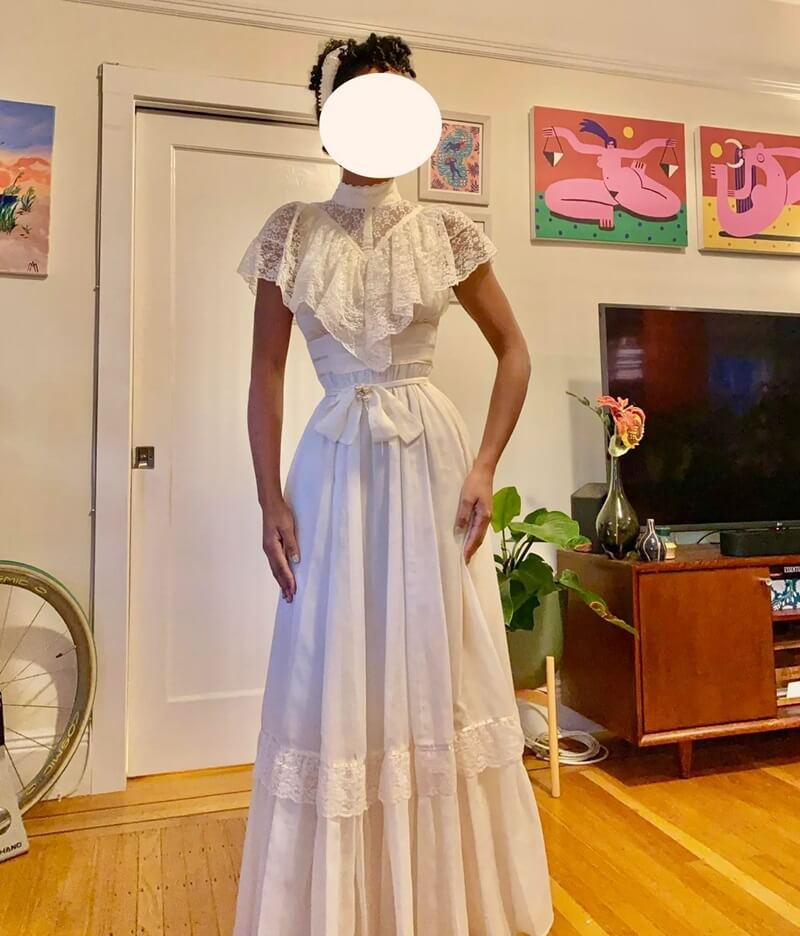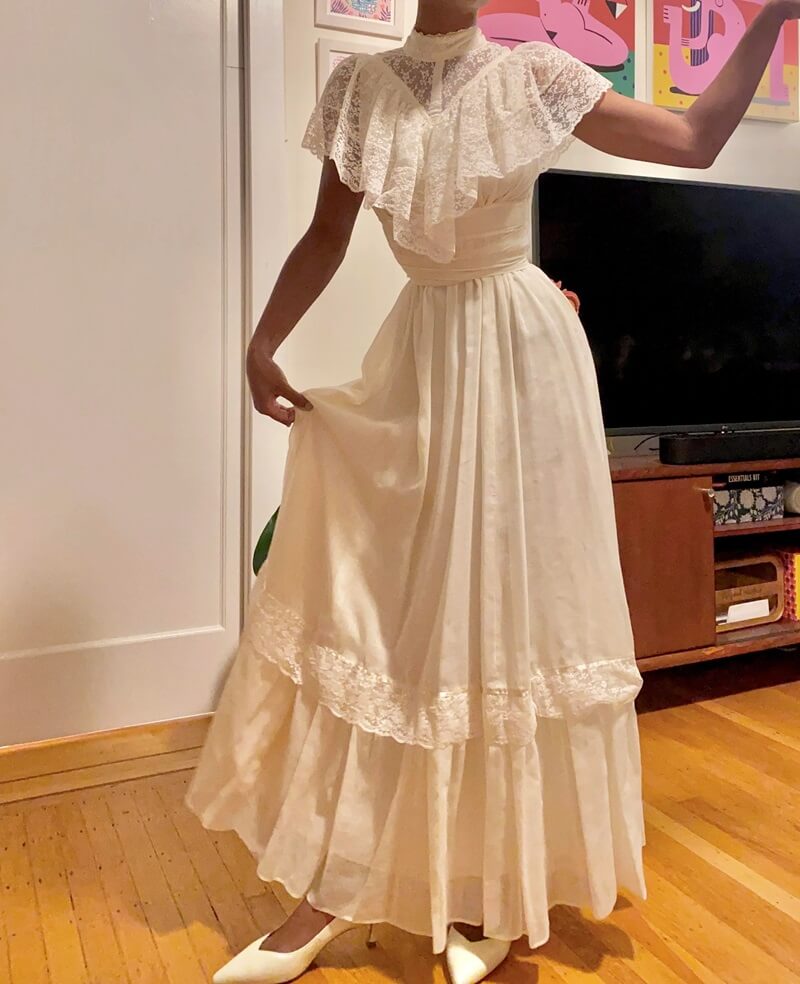A bride-to-be wowed fellow thrifting enthusiasts with the vintage wedding dress she found by posting images in the subreddit r/VintageFashion.
In photos, the dress appears to be in pristine condition, boasting delicate lace details and pearls.


That's "the nicest wedding dress I've seen on Reddit," one person complimented.
"This is exceptionally gorgeous," another enthused.
For vintage lovers, beautiful clothing is only part of the appeal when it comes to shopping secondhand.
Perusing the racks of a local thrift shop is an opportunity to strike gold, from stumbling upon rare clothing pieces to accessories, art, and more. Not only do these stores offer ways to build a personal style with one-of-a-kind pieces, but the items are also priced at mere pennies on the dollar — particularly luxury ones. In fact, the average secondhand shopper will spend around one-third less at a thrift store than they would buying the equivalent haul of items new.
Beyond the thrill and the savings, thrift shoppers can also revel in the knowledge that they are keeping their dollars out of the toxic fast-fashion industry.
Fast fashion, the practice of manufacturing high volumes of cheaply made, highly polluting garments, is one of the world's major contributors to global heating, producing up to nearly 10% of carbon emissions worldwide, per the U.N. Environment Programme. It's also a major source of waste generation, creating millions of tons of textile trash each year.
For all these reasons, more people are beginning to explore thrift shopping, searching for everything from wedding dresses to kitchen appliances, home decor, and more. Over 40% of millennials and Gen Z regularly buy secondhand clothes, and the resale industry in the United States is growing 11 times faster than traditional retail, per Gitnux.
Others are choosing to forgo buying anything new altogether by adopting the trending "No-Buy Year" challenge, wherein they minimize or eliminate all superfluous purchases. Luckily for thrift shoppers, the carbon footprint — and financial footprint — of thrift shopping is small compared to traditional retail.
"This took my breath away. You look incredible in this. … Congratulations on the most perfect dress!" one commenter raved.
"I think it was made for you!" another agreed.
Join our free newsletter for easy tips to save more, waste less, and help yourself while helping the planet.









